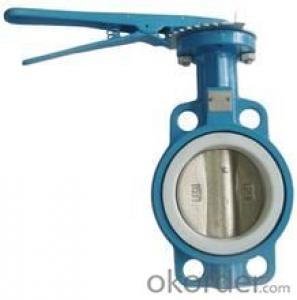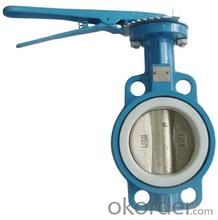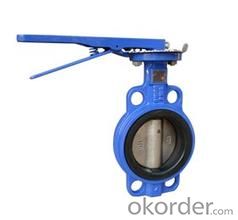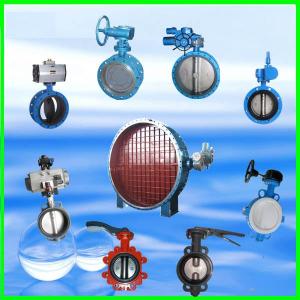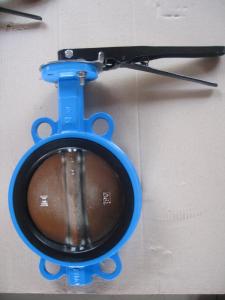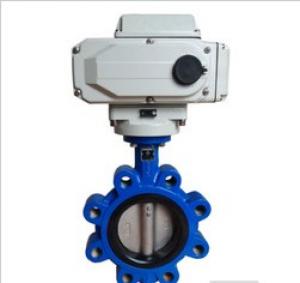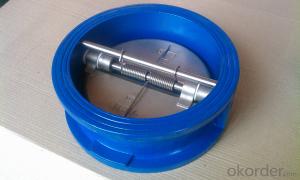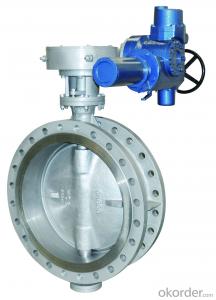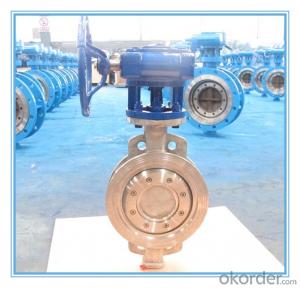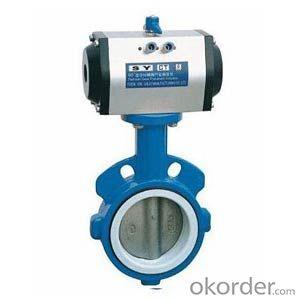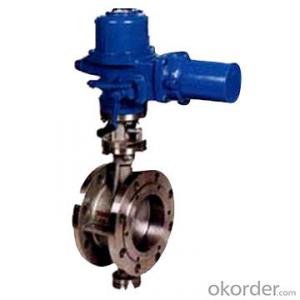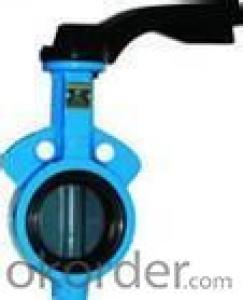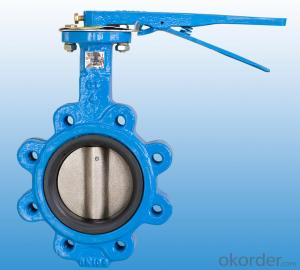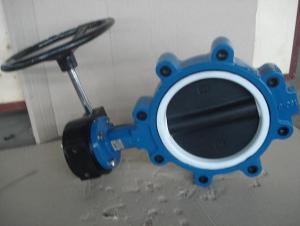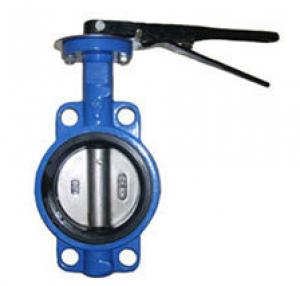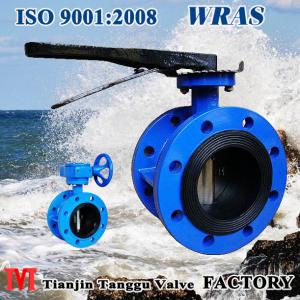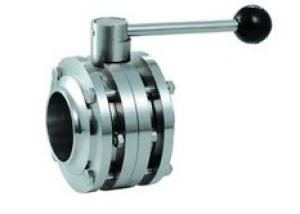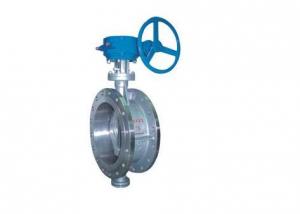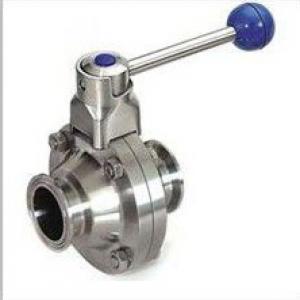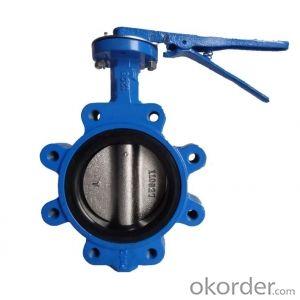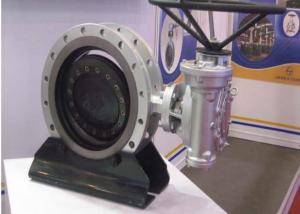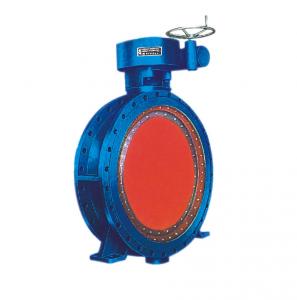Butterfly Valve Manufacturer (double flanged/single flanged/U type/wafer type/lug type)
- Loading Port:
- Shanghai
- Payment Terms:
- TT OR LC
- Min Order Qty:
- 10 set
- Supply Capability:
- 100 set/month
OKorder Service Pledge
OKorder Financial Service
You Might Also Like
Specifications
1)Size: DN40-DN1400
2)Material:body-CI/DI/WCB/SS
disc:DI/CF8/CF8M/C95400
3)Professional Maufacturer for more than 10 years
Wafer Type Double Half Shaft Butterfly Valve Without Pin
Product presentation
1) Sizes:
DN40mm-DN300mm
2) Materials:
a) Body: CI(cast iron ,GG25 ) / DI (ductile iron ,GGG40)
b) Disc: DI / CF8 / CF8M / C95400
c) Seat: EPDM / NBR / TEFLON / VITON
3) Features:
a)Cast hole. Flange connection meet ANSI 125/150# DIN PN10/16 BS4504 PN10/16 in the meanwhile.
b)Soft seat. Replaceable.Increase of service life.
c)Double half shaft without pin.
d) Square and short neck. Easy to stick scutcheon and cost saving.
These products are widely used in water source projects, urban water supply
and drainage, sewage treatment, electric power, petroleum, petrochemical,
heat supply, shipbuilding, medicine and metallurgy industries. Valves used for regulating or cutting off liquids in pipelines.
Liquids available include water, sewage, sea water, air, foodstuff and oil.
Specifications:
1) Working temperature: -20- +200°C
2) Suitable for handles (DN50 - 300), gear operators, electric and pneumatic
control actuators
- Q: Transformer butterfly valve and pressure relief valve difference
- The oil immersed transformer pressure release valve is a safety device installed in the transformer, when the internal pressure is less than the limit value of the transformer such as 35kPa, which is in closed state, when the transformer internal fault occurs, a large number of transformer oil by pyrolysis, produce large amounts of gas, the internal pressure of the oil tank increased dramatically when the opening pressure exceeds the pressure release valve when the pressure relief valve opens, the internal oil and gas overflow, to release the pressure, avoid the pressure on the inside of the lead tank cracking or permanent deformation, when the fault of transformer internal end, internal pressure tank to reduce pressure release valve closing pressure, it will automatically shut down to prevent outside air enter the inside of the tank or water.
- Q: Ok, so I took my car in for maintenance (Mustang GT convertible 2002) and the mechanic told me the valve gaskets needed to be replaced and when he gave me the estimate, they were two seperate charges for valve gaskets and valve covers, total of about $250.00 not including labor. Is he trying to rip me off cause I'm a girl by the way? Anyways, I didn't get it done cause it needed something else too and I didn't have enough money so I said I would be back in two weeks. So I called the dealership to inquire about the price and I asked the parts guy for a price on valve gaskets and he was like, I don't know what you mean, we have valve cover gaskets but nothing says just valve gaskets? I told him to give me the price anyways, thinking I would ask my brother (who hasn't tried to help me anyways) and it was $60.00 for both (I need two). How can this be if the other guy was charging me $250.00 for different parts? Help!!! Frustrated and confused, I don't know anything about cars :(
- This Site Might Help You. RE: Is a valve gasket the same as a valve cover gasket? Ok, so I took my car in for maintenance (Mustang GT convertible 2002) and the mechanic told me the valve gaskets needed to be replaced and when he gave me the estimate, they were two seperate charges for valve gaskets and valve covers, total of about $250.00 not including labor. Is he trying to rip...
- Q: What does "C" in D971F-16C DN450 RF mean for electric butterfly valves?
- C represents the valve body and the material is cast steel;D stands for butterfly valve; 9 stands for electric; 7 stands for clip type; 1 represents middle line butterfly valve; 16 stands for nominal pressure 1.6Mpa; RF stands for flange joint; in the form of protruding surface.
- Q: Function of signal butterfly valve in fire sprinkler system
- The signal butterfly valve is generally installed in two parts: floor level, dry pipe, flow indicator front end, trunk pipe, wet alarm valve, front end.Floor level pipe installation is a function of the signal valve, when the floor spraying system needs repair, close the valve, open the end of the floor drain, emptying the water in the spray system, maintenance; two is the sprinkler system is not allowed inside water, when the butterfly is closed, will transmit a signal to the the fire alarm system, fire alarm system receives a monitoring signal (so called signal butterfly valve), fire sprinkler system that the floor is anhydrous state, fast repair.Wet alarm valve at the front of the signal butterfly valve with the main floor of the main role of the butterfly valve, first, maintenance, and two is the prompt sprinkler system, there is a signal butterfly valve closed, should be repaired as soon as possible.
- Q: oil coming from valve into turbo charger
- The last two answers were wrong. Duramax motors have a Pcv valve. It stands for positive crankcase ventilation and every engine has one that I am aware of and it's to relieve the air pressure built up in the crankcase from the pistons moving up and down. The Pcv allows atmospheric air pressure inside then crankcase. If there is a lot of air pressure coming out of the Pcv you could have bad valve seals or worn piston rings allowing massive amounts of air being forced into the crank case. The Pcv valve on 2003 and older have the Pcv built into the valve cover. It is a box shape cap that has a spring and diaphragm under it. Old question just thought I would clear that up for the 2 people not so mechanically inclined that answered last.
- Q: Types of butterfly valves
- There are clip on butterfly valves and flanged butterfly valves,Manual, pneumatic, electric,
- Q: What is the national standard for clip butterfly valves?
- GB/T 12238-2008 "flange and clip connection elastic seal butterfly valve"GB/T 26144-2010 flanged and clip on steel lined fluoroplastic butterfly valvesJB/T 8527-1997 "metal sealed butterfly valve"
- Q: Which is more expensive, gate valve or butterfly valve?
- Gate valve.Under normal circumstances, if you need to adjust the good point, to use the gate valve, and if better, you can choose the cut-off valve.But the price is also butterfly valve, gate valve, globe valve increasing.
- Q: What are the uses and classifications of manually operated clip butterfly valves?
- Manual to clip butterfly valve use: manual to clip butterfly valve butterfly plate installed in the pipe diameter direction.
- Q: What is the difference between wafer (flangeless) type and LUG type of butterfly valves?
- WAFER butterfly valve is the valve is divided into LUG (ears) with and without LUG, ordinary LUG without clip on 12 points in the direction of valve is generally two to four bolt holes was not, whereas the LUG of butterfly valve cross dispersed in a circle. Bolt hole. With LUG all bolted through the LUG, so that the butterfly valve and the clamp on the two flange connection is more solid, you check the valve picture, it is easy to understand
Send your message to us
Butterfly Valve Manufacturer (double flanged/single flanged/U type/wafer type/lug type)
- Loading Port:
- Shanghai
- Payment Terms:
- TT OR LC
- Min Order Qty:
- 10 set
- Supply Capability:
- 100 set/month
OKorder Service Pledge
OKorder Financial Service
Similar products
Hot products
Hot Searches
Related keywords
